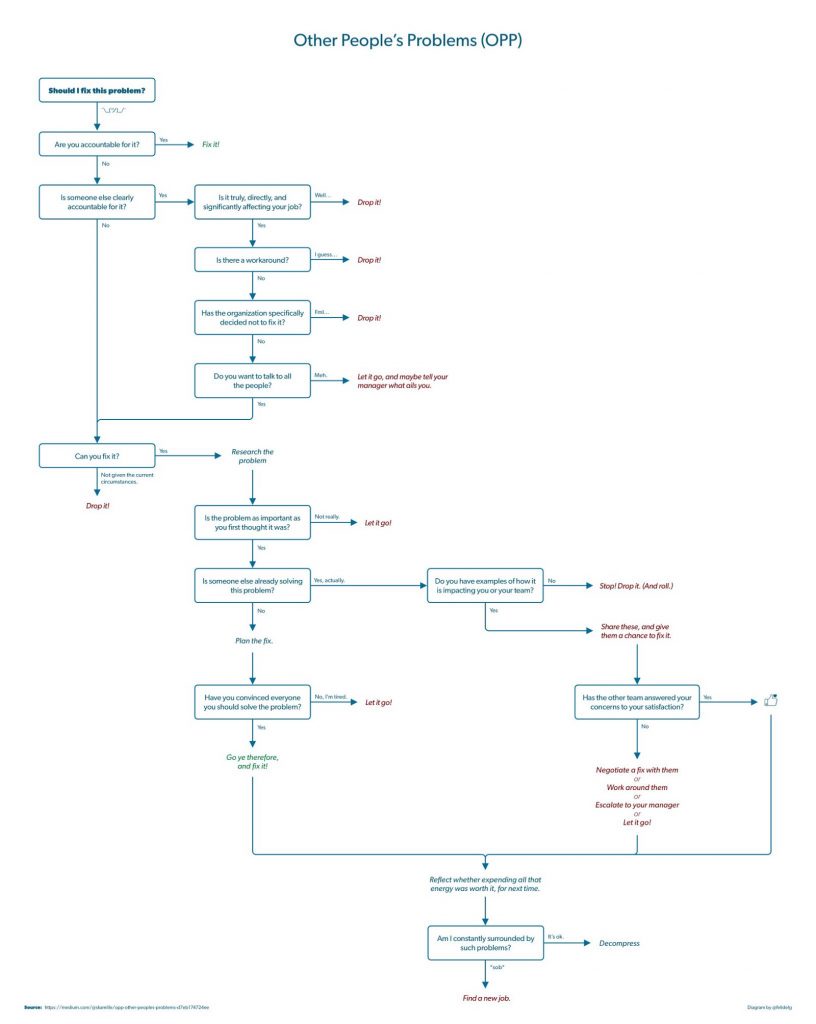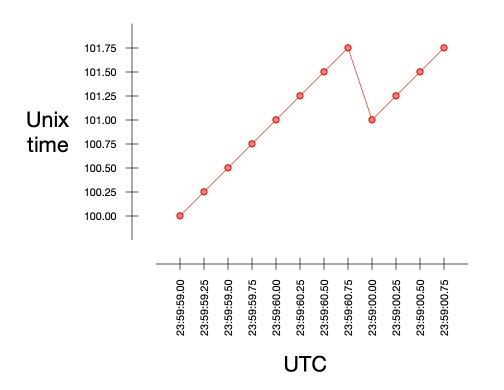
I really liked “OPP (Other People’s Problems)” article which talks about handling of responsibility for things that other people should be responsible for.
If you’re reading this looking for advice, you’re probably a go-getter. You consider yourself a responsible person, who cares deeply about doing things right. Your care may be focused on software and systems, or on people and organizations, or on processes and policies, or all of the above.
This attitude has probably served you well in your career, especially those of you who have been working for a number of years. You’ve been described as having a “strong sense of ownership,” and people admire your ability to think broadly about problems. You try to think about the whole system around a problem, and that helps you come up with robust solutions that address the real challenges and not just the symptoms.
And yet, despite these strengths, you’re often frustrated. You see so many problems, and when you identify those problems, people sometimes get mad. They don’t take your feedback well. They don’t want to let you help fix the situation. Your peers rebuff you, your manager doesn’t listen to you, your manager’s manager nods sympathetically and then proceeds to do nothing about it.
That kind of grinding frustration can wear you down over time. I know, because I’ve been there.
Not only the article describes the problem, but it provides a practical approach to dealing with it.
In the last few years, I was going through a very similar thinking process in my head, but I’m nowhere near the well-defined suggested approach. I wish I read this much earlier in my career. Much much earlier.

